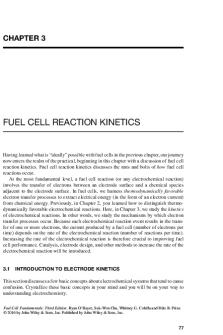Papaya and Mango Peelings for Fuel Briquette (05 03 12) DOCX

| Title | Papaya and Mango Peelings for Fuel Briquette (05 03 12) |
|---|---|
| Author | Darwin Escopete |
| Pages | 34 |
| File Size | 1.1 MB |
| File Type | DOCX |
| Total Downloads | 280 |
| Total Views | 725 |
Summary
1 CHAPTER I INTRODUCTION A. Background of the Study The Philippines is a tropical country that is abundant with nutritious and refreshing fruits that Filipinos are fond of eating. Papaya and mango are two of the most common fruits that could be found in some Filipino desserts. However, in the proces...
Description
1 CHAPTER I INTRODUCTION A. Background of the Study The Philippines is a tropical country that is abundant with nutritious and refreshing fruits that Filipinos are fond of eating. Papaya and mango are two of the most common fruits that could be found in some Filipino desserts. However, in the process of consumption of these delectable fruits, the peelings that were acquired are either wasted or thrown away. Brilliant minds have formulated a solution to recycle these organic wastes and make them into something useful, a fuel briquette. It is basically composed of organic materials and could be used like a charcoal. Fuel is any material that can store energy and releases it through combustion. The modern way of life is intimately dependent on the use of fossil fuels. However, the increased consumption of nonrenewable resources may lead to the overproduction of carbon dioxide, which is one of the major causes of global warming. Excessive reliance on fossil fuels may cause it to be used up. The use of fuel made from biodegradable wastes is ideal, since it recycles agricultural residues. (Conserve Energy Future, 2008) Fuel briquettes are used like coal, but are made from a combination of organic wastes, shaped into blocks. Densification of fruit peelings and wood waste into briquettes can provide a relatively high-quality alternative source of fuel, which...
Similar Free PDFs

I31 cours 05 12
- 4 Pages

Fuel AND Combustion
- 28 Pages

La Papaya Wikipedia
- 20 Pages

Sunup Papaya paper
- 2 Pages

Fuel Prices
- 4 Pages

Song Airlines Answers 05 03 20
- 6 Pages

Mango Supply Chain
- 37 Pages

FUEL CELL REACTION KINETICS
- 40 Pages

PEX-03-05 - Physio Ex 9.1
- 10 Pages

PEX-05-03 - Physio Ex 9.1
- 4 Pages

FUEL PUMP
- 33 Pages
Popular Institutions
- Tinajero National High School - Annex
- Politeknik Caltex Riau
- Yokohama City University
- SGT University
- University of Al-Qadisiyah
- Divine Word College of Vigan
- Techniek College Rotterdam
- Universidade de Santiago
- Universiti Teknologi MARA Cawangan Johor Kampus Pasir Gudang
- Poltekkes Kemenkes Yogyakarta
- Baguio City National High School
- Colegio san marcos
- preparatoria uno
- Centro de Bachillerato Tecnológico Industrial y de Servicios No. 107
- Dalian Maritime University
- Quang Trung Secondary School
- Colegio Tecnológico en Informática
- Corporación Regional de Educación Superior
- Grupo CEDVA
- Dar Al Uloom University
- Centro de Estudios Preuniversitarios de la Universidad Nacional de Ingeniería
- 上智大学
- Aakash International School, Nuna Majara
- San Felipe Neri Catholic School
- Kang Chiao International School - New Taipei City
- Misamis Occidental National High School
- Institución Educativa Escuela Normal Juan Ladrilleros
- Kolehiyo ng Pantukan
- Batanes State College
- Instituto Continental
- Sekolah Menengah Kejuruan Kesehatan Kaltara (Tarakan)
- Colegio de La Inmaculada Concepcion - Cebu




